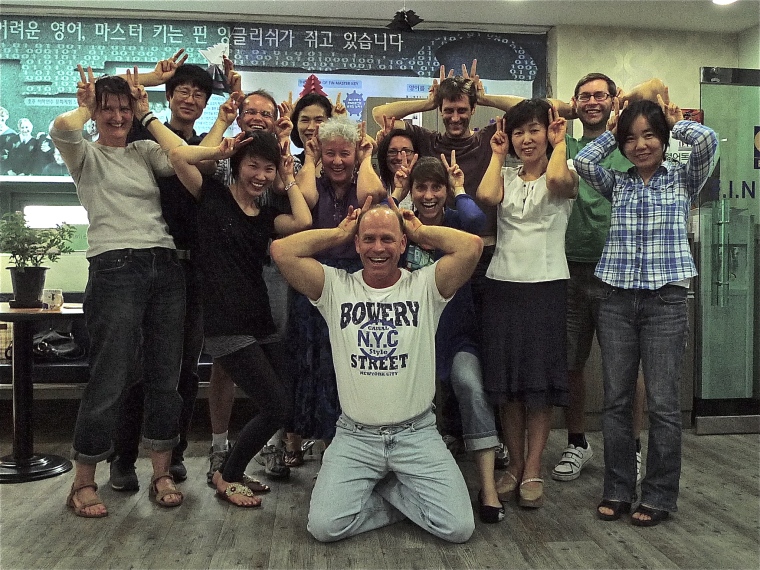Modern education pays attention to the development of the brain and the intellect, but this is not enough. We need also to be able to develop warm-heartedness in our educational systems. This we need from kindergarten all the way through university.
I couldn’t agree more. Without cultivating warm-heartedness, compassion and empathy for the self and other, we risk cultivating ignorance, indifference, fear and hate. And everywhere you look, there are far too many examples of these human characteristics. The world doesn’t need to develop these anymore. I believe that one of the ways to develop as the Dalai Lama suggests is to learn how to communicate in peaceful, nonviolent ways. This is why it is important to teach this form of communication.
This brings me to a point of clarification. After receiving kind feedback from one of my favorite readers, and after rereading yesterday’s post, I realized that I wasn’t clear about why I chose to write about my experience with nonviolent communication (NVC). I usually post my reflections on what happened in the classroom, but yesterday’s post was much more personal.

To me, nonviolent communication and pedagogy are synonymous practices. This is one of my greatest passions, and a way of life I strive to practice and instill despite the challenges. This is why I have been meeting with my NVC practice group for the last two years. Without this regular work, I know I would be struggling even more to make this passion a reality.
Unfortunately, unless you’re highly evolved, warm-heartedness, compassion and empathy won’t easily come to you. You’ll have to work for it. If you aren’t exposed to these important characteristics in your formative years, you’ll have to work even harder. But more than likely, they’ll completely bypass you, hence the Dalai Lama’s Facebook status.
So, perhaps my blog is about to embark on a new path. In an attempt to revive my dream of empowering teachers to help develop compassionate human beings (students), on occasion I will use my blog to reflect on how I observed elements of NVC in my classroom, from either the point of view of my participants or my own. Through these reflections I hope to gain, and share, a stronger understanding of how warm-heartedness can create a space for itself in our education systems.
Related articles
- Peaceful Co-existence After Sept. 11 From The Dalai Lama (wellbeinginsideandout.wordpress.com)
- Non-violence (olmwsimpletruths.wordpress.com)

warm-heartedness, compassion and empathy – important, indeed!
LikeLike
I am happy you agree :)
LikeLike
What I appreciate about this piece is your internal vow to KEEP TRYING! Ram Dass alludes to the fact that communicating with family is one of the most challenging aspects of life, and it seems to me that many just give up, they keep it all on a nice, surface level, or not communicate at all. But you have committed to going deeper with the NVC practice and to bringing it back to your family. KUDOS, Josette!
LikeLike
“Through these reflections I hope to gain, and share, a stronger understanding of how warm-heartedness can create a space for itself in our education systems.” Well said . What a beautiful experience that everyone can all learn from. Thank you.
LikeLike
Thank you for sharing with me what resonated with you. All the best.
LikeLike
A question that seems to be surrounding me lately – “What is core to transformative education courses?” Beyond this the question is – “How do we distill and teach/train/share transformative education?” What I’m learning is that it’s tricky to nail down. As a teacher and trainer it lived in and among the myriad of interactions that happened throughout the course. As an administrator/manager I find that it lives in the stories I hear from course administrators, trainers and participants. Despite the different angles I still find it tricky to articulate and write out in a clear way so that others can understand what I’m talking about. This skill of not only practicing warm-hearted education but also being able to articulate it to others caught me off guard. It raised my awareness of the necessity of not only knowing the practice of teaching but also needing to find a way to distill and share that practice.
LikeLike
Well said Kevin, “It raised my awareness of the necessity of not only knowing the practice of teaching but also needing to find a way to distill and share that practice.” It is such a struggle to maintain this practice myself, that I often wonder how I could share such a practice with others. I’ll keep trying because deep down, I know how important it is to me.
I’m curious about the word you used. Why distill and not instill? Would you not want to instill something as a teacher/trainer, or is the idea of distilling a way to check into beliefs that we have that may not serve transformative education?
LikeLike